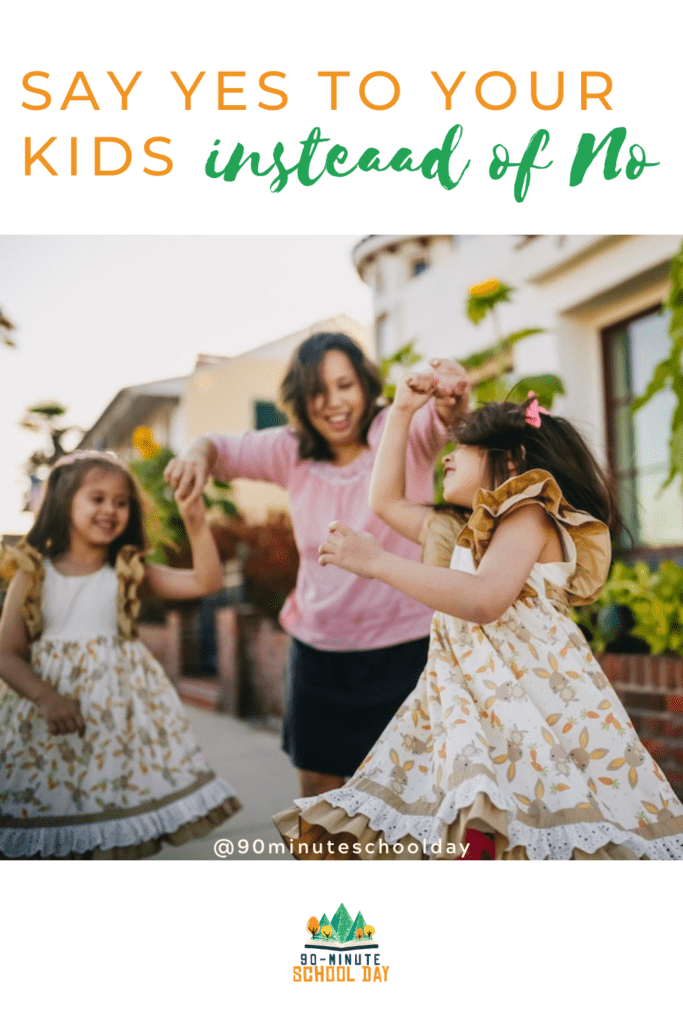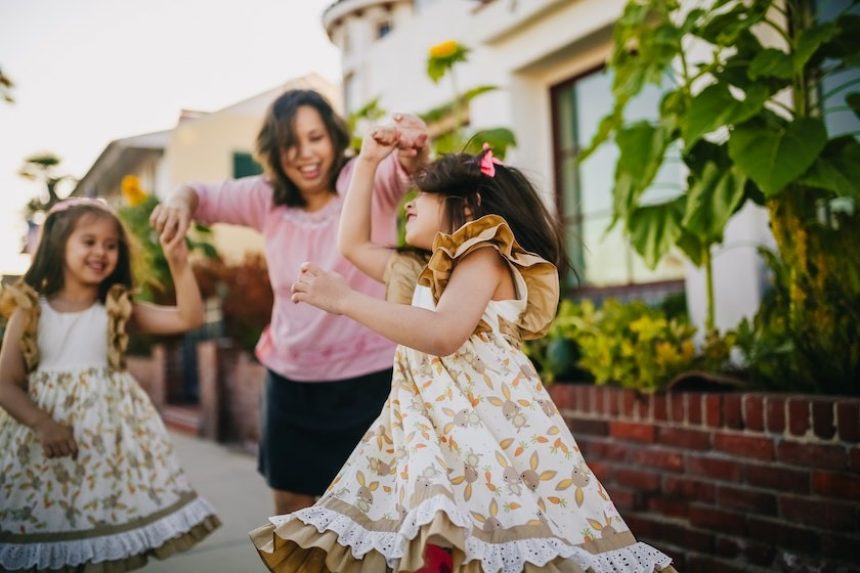Your kids hear “No” all the time. Their lives are theirs to own and figure out; their self-development theirs to explore. Much of their growth is a push for independence. This creates conflict if we are not tuned in.
Stop and think about it, our goal as parents is to raise kids with autonomy. In other words, our job is to raise independent, confident, able and responsible kids into adulthood. Above all, we aim to emancipate young adults who can think critically and make informed decisions. We also want to create memories and have fun along the way!
Create the Intention with Margin
Creating an intention of saying “YES” to our kids must begin with margin first. It’s hard to say yes to anyone (including ourselves) when we are scheduled to the max. Saying “yes” to our kids requires time to spend on the “yes.” Therefore, we intentionally say “no” to other demands so that our schedule is more open to say “yes” to our kids.
For example, you may want to time block. Hold time in your day for flexible non-urgent tasks. In our home, this is built into several parts of our day. I have an AM time block and a PM time block. The AM is for formal home education and house responsibilities. However, the block is large enough to accommodate “yes” requests. This is also self-directed learning, to honor their requests and dive into interests with my children. The PM block is free time at the end of the day. During this time, the children often play with friends. Regardless, I’m intentionally less scheduled so that I can say “yes” with ease. Fridays are held open on purpose for this reason as well.
This is not Permissive Parenting
Having an intention to say “yes” rather than “no” is not permissive parenting. This is authoritative parenting. An authoritative parent uses love and limits. The difference in the “yes” of a permissive parent versus an authoritative one is the why behind the response to our kids. A permissive parent wants to pacify the child and eliminate the interruption. The authoritative parent uses this opportunity to listen and observe their child; to learn the heart behind the request and to respond from understanding.
Ask Yourself these Questions
Next time you are about to say “no,” pause and ask yourself these questions.
- What about this request do I agree/disagree with?
- Is it safe?
- What is required of me to say “yes”?
- What is the “yes” I can give this situation? Discuss revisions with child.
Parenting with a mindset of saying “yes” is to truly listen and understand our children’s requests. We honor them by listening and responding in a loving manner regardless of the ask. Promote respect by taking their request seriously and responding honestly.
We have a rule in our home that you can talk to us about anything, it just needs to be respectful. Encourage your children to acknowledge what was said and its value. They may respond if they disagree by advocating (respectfully) for their position. This is a life-long skill that is good to develop early. Time to reset is often helpful before we can continue a respectful dialogue. Consistency, time and dedication to growing respectful communication is a healthy relational technique for a lifetime.
Saying Yes is Good for their Brain, and Yours
Saying “yes” opens up possibilities and creativity. When we say “yes” to our child, it invites us to explore solutions, focus on growth and accomplishment to achieve the goal of “yes.” This opens up and is a healthy activity for our own brain. Saying “yes” requires strategizing together, perhaps dreaming. It may be a simple detour that delights.
Having a “no” outlook is limiting. Hearing “no” frequently shuts kids down. They begin to assume the answer will be “no,” and therefore stop asking. Alternately, “no” brings conflict for some kids. These children choose to fight a “no” rather than shut down. Either way, a no mindset develops a scarcity mindset. The glass is half full, “yes” is finite and limited. It is important to notice when this type of thinking is happening, so you can stop and refocus. Clear the air with a reset. Or apologize for the knee-jerk response and revisit the request. Hold your limits, but do so after listening, understanding and emphasizing with the child. Then set a time for the “yes” to their request.
This is important to teach our kids. “No” is something we want them to reconsider as well. How can they find a way to say “yes” to their sibling or friend but maintain their limits? Parents teach this well with sharing. Do not require your child to share. Instead, teach how taking turns is better for everyone. Allow natural consequences of not sharing. Negativity is where “no” lives and its often coming out of a place of exhaustion, frustration or fear. Over scheduling and overstimulation feed into the dynamic as well. We want to develop an abundance mindset in our kids; therefore, we must also strive for abundance in own lives.
Grow your “Yes” mindset
Saying “yes” requires flexibility, freedom, openness and trust. It results in curiosity, creativity and grows connection. Failure may occur, however stemming from a “yes” mindset is far different from a “no” mindset. This kind of “yes” failure builds resilience, problem solving, key learnings. Let’s endeavor to say “yes” more to our kids.





